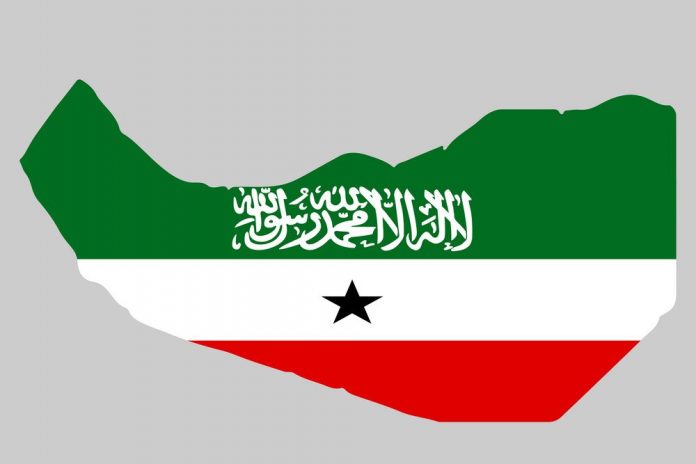The independence of British Somaliland (north) came into being on 26 June 1960. Five days later, Italian Somaliland (south) attained independence. Both north and south merged for irredentism agenda – to unify five different Somali regions under one ethnic umbrella. The merger of the two territories faced legal obstruction. Both sides signed no identical unifying law. Italian Somaliland never passed an act of union drafted by British Somaliland. Instead, it passed a different act named Atto di Unione, which was substantially different from British Somaliland’s original marriage act. According to Rajagopal and Carrol (1992), the act of union law did not have legal validity in southern Somalia, and the subsequent but different passed Atto de Unione was legally insufficient. Therefore, the declaration of independence was legally invalid.
The de facto union birthed precarious imbalances. The southern took the capital, significant government posts, including the president, the prime minister, ten out of fourteen ministerial posts, the police, and army commanders. As a result, the sentiment of Pan-Somalinism by northerners faded. Further, a referendum on the constitution in 1961 was boycotted by half of the eligible northern voters whilst the other half opposed the constitution. A failed military coup led by successionist military commanders also took place to reverse course.
These events heralded the union to falter quickly. The tension undermined the amalgamation of all Somali ethnic regions. Further, it exacerbated the repressive military regime of Siyad Barre, who come to power in a coup in 1969. His repressive and discriminative policies to subjugate Somaliland people set a harbinger of the resistance movement’s raise – the Somali National Movement (SNM) to fight against marginalization. To crush the resistance, Barre used his patrimonial clan-based system to liquidate the Isaaq problem violently, according to a leaked report in 1990. Major cities were leveled into the ground, 50,000 people were killed, and estimated half-million people were displaced. Eventually, the Siyad Barre regime was defeated. – 30 years of turbulent merger collapsed.
Traditional elders in the north held clan-based reconciliation conferences to end intra-clan hostility. Peace charter was agreed. Later conferences were also held to build consensus on statehood and harmonize clans’ interests across the country.
After the independence of Somaliland was declared in 1991. SNM was given a two-year mandate to institutionalize clan-based power-sharing, disarm militias, write a constitution and formulate Somaliland for a democratic election. When the interim government led by Abdirahman Tur ended, the power was handed to a civilian administration. This marked the beginning of a locally owned nascent hybrid democratic journey.
The following administration led by president Egal strengthened the security, decentralized the administration, and oversaw a referendum on the constitution that was approved overwhelmingly. Egal also administered the creation of a multi-party election system in 2002. The first multi-party election was held in 2005 which president Dahir Riyale was elected.
President Dahir Riyale was instrumental in the democratization of Somaliland. He successfully conducted local council elections, parliamentarian, and two presidential elections. He further decentralized the administration and wielded power in parts of the country that were not under the government’s control. Besides, president Riyale has been credited for the peaceful power transfer to his successor – president Silanyo.
President Silanyo government’s emphasis was on development. His administration attracted foreign direct investment to invest vital productive assets, including DP World that financed up to US$442 million to develop and expand Berbera port and Genel’s oil exploration in Somaliland, targeting over two billion barrels. Silanyo’s administration also financed the construction of vital infrastructures crucial for the development and established the Somaliland Development Fund, an inclusive economic development arm funded by international partners. Silanyo’s one-term tenure ended the armed conflict between Somaliland and Khatumo.
The current government led by president Muse Behi stepped up a multifaceted diplomatic approach to revive the recognition efforts. His government took new strides to establish and foster strong diplomatic and economic relations with many countries in the region and beyond. Maintaining the democratic credentials, the current leadership is administering a combined local and parliamentarian election on 31st May.
After sixty years of British independence, the country suffered thirty years of turbulent union. The other thirty years was state-building through democratic principles and ideals. During the later thirty years, the constitution referendum, three presidential elections, and parliamentary elections were conducted. Currently, combined local and presidential elections are underway.
At this historical crossroad, the Somaliland government re-energizes a pivotal journey to realize the cherished dream of international recognition, which has a solid legal, historical and political basis. It is time the world gives Somaliland the recognition it deserves.
By Abdinassir Ahmed
 Abdinasser Ahmed is a developmental economics practitioner and HOA political commentator based in Kuala Lumpur. He can be reached through Twitter @AbdinasserAA or abdinasserahm@gmail.com
Abdinasser Ahmed is a developmental economics practitioner and HOA political commentator based in Kuala Lumpur. He can be reached through Twitter @AbdinasserAA or abdinasserahm@gmail.com





























